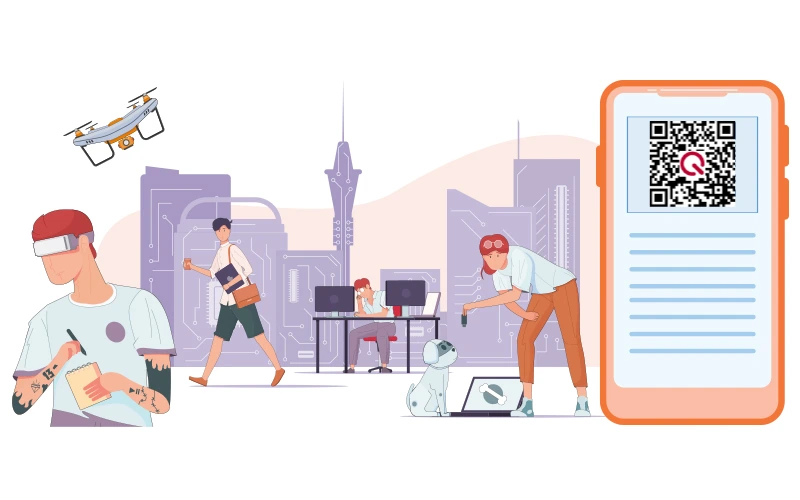
The Future of QR Codes Beyond 2024
Technological forecasts often miss the mark. Some innovations that appear destined for success fade into obscurity, while others, initially overlooked, become indispensable.
QR codes fall into the latter category. Although invented in 1994 by Masahiro Tanaka, their widespread adoption only occurred in the past decade.
Years ago, encountering a QR code on a poster or product rarely led to interaction. The primary barrier was the need for a specialized app to scan them, which contradicted the convenience they promised. Fast-forward to today, QR codes have become a universal bridge between offline and online realms, offering diverse applications across industries.
The Pandemic’s Role in Reviving QR Codes
The global pandemic dramatically shifted how we interact with technology, catapulting QR codes into mainstream use. Originally an upgrade of the classic barcode, QR codes became essential tools for contactless transactions. They now dominate restaurant menus, event tickets, and boarding passes—and even power the COVID Certificate.
One of their greatest strengths is adaptability. Information embedded in QR codes can be updated without creating new codes, making them invaluable for businesses. Additionally, the evolution of mobile technology has eliminated the need for third-party scanning apps; most smartphones now come equipped with built-in QR code readers.
QR Codes Today
QR codes have become integral to digitizing industries, particularly in tourism and retail. For instance, they direct customers to detailed information and personalized offers, bridging the gap between businesses and consumers.
Their dynamic nature allows for constant updates, making them the perfect tool for creating seamless, interactive experiences. Today, customers value the ability to access comprehensive information instantly, paving the way for even more advanced QR code applications.
The Future of QR Codes
The trajectory of QR codes is largely consumer-driven. Their continued relevance will depend on how businesses innovate to enhance the user experience.
Adoption and Growth
A report from Juniper Research highlights that by 2022, over a billion smartphones were scanning QR codes—a 300% increase since 2017. With 74% of consumers trusting QR codes to provide reliable product information, their utility shows no signs of waning.
Integration with NFTs
Experts predict QR codes will integrate with emerging technologies like non-fungible tokens (NFTs). For example, airline tickets or event passes could become collectible or tradable NFTs, adding value beyond their primary function.
Payment Systems
QR codes have revolutionized payments, making transactions quicker and more accessible. Virtual wallets, banking platforms, and super apps have embraced QR-based payments, offering consumers rewards, discounts, and lower costs.
Industry Applications
Enhancing User Experience
Retailers use QR codes to simplify price checking and streamline customer interactions, saving time for both shoppers and staff. Marketers benefit, too, by tracking user behavior and using insights to refine campaigns and re-engage customers through digital platforms.
Healthcare
In healthcare, QR codes improve patient tracking and data management. Placed on bracelets or medical records, they grant quick access to vital clinical information, enhancing efficiency and accuracy in patient care.
Marketing Innovations
QR codes are a gateway for creative marketing campaigns. Platforms like Yahoo use them to connect offline and online experiences, whether through augmented reality, videos, or interactive games. These efforts significantly boost user engagement and create memorable brand interactions.
Beyond 2024: QR Codes in the Metaverse
As technology advances, QR codes will play a pivotal role in connecting users to the metaverse, immersive gaming, and augmented reality experiences. These codes will continue to serve as a portal, bridging physical and virtual worlds, and driving brand engagement in innovative ways.
The evolution of QR codes will be defined by their ability to adapt to emerging technologies and meet ever-changing consumer expectations. One thing is clear: QR codes are here to stay.